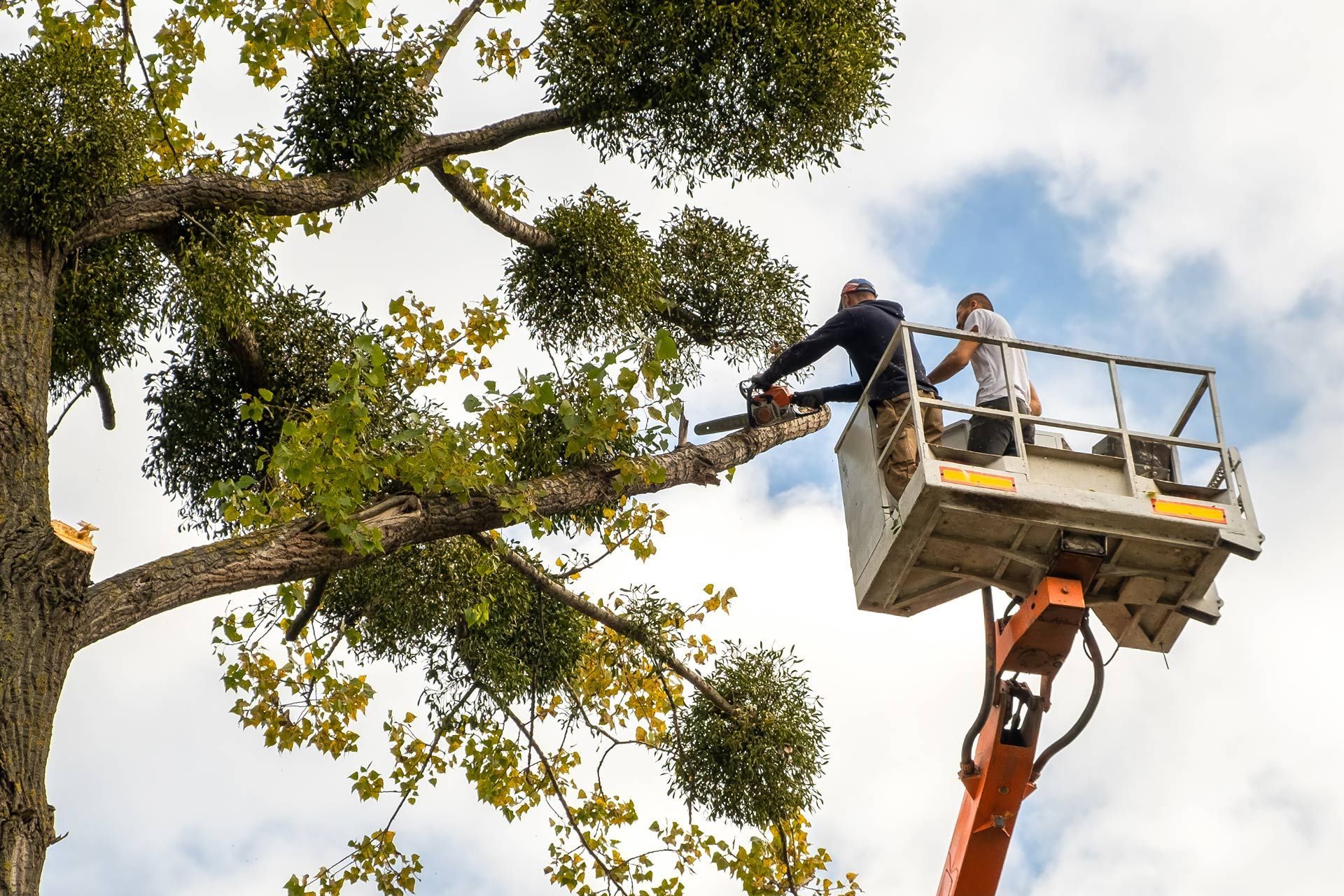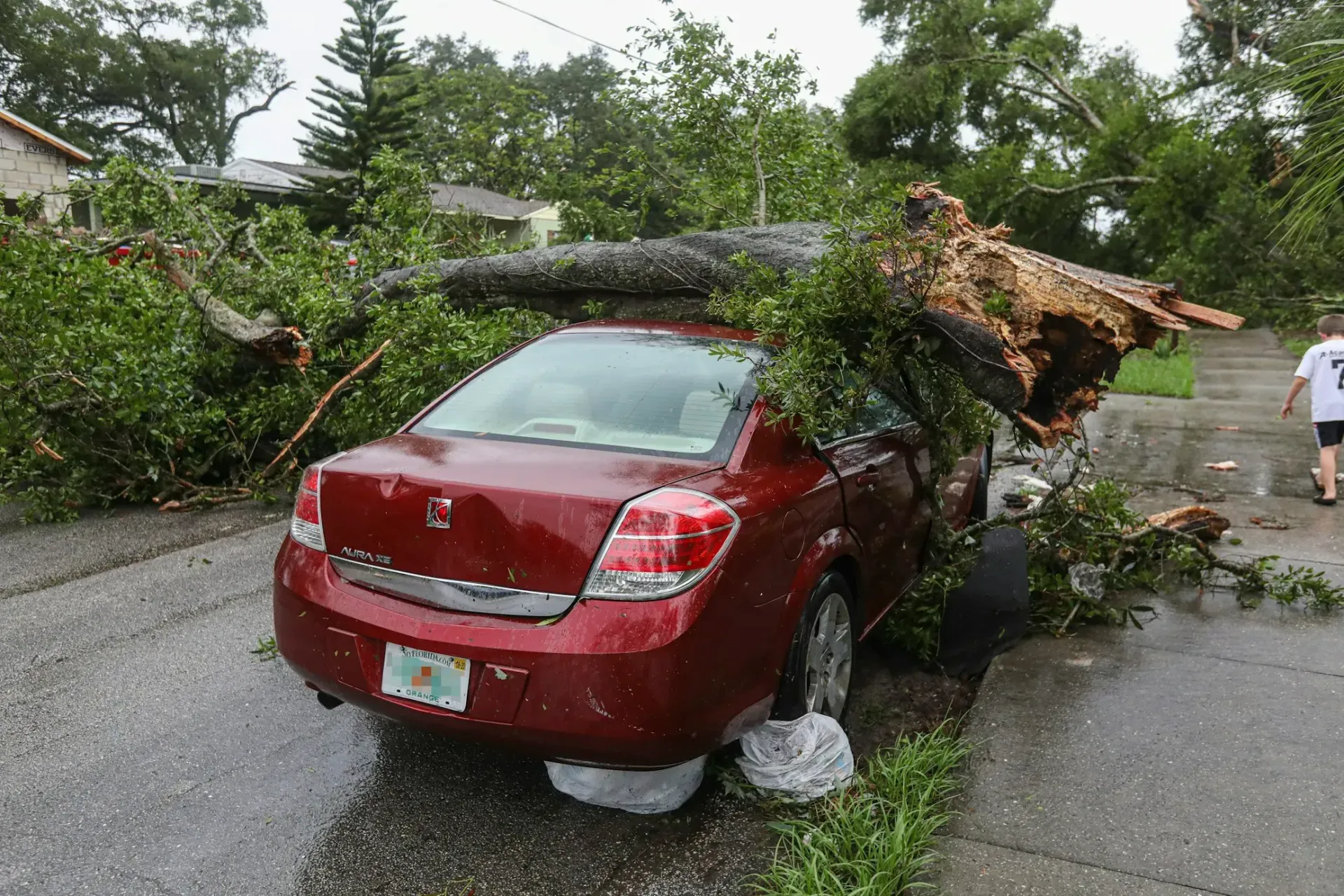How Much Insurance Pays for Tree Removal in Northeast Ohio

How Much Does Insurance Pay for Tree Removal in Northeast Ohio?
Tree removal can be costly, especially when it’s unexpected. In many cases, homeowners' insurance might help cover the expense, but it depends on the situation. In Northeast Ohio, where storm damage is common, knowing when and how insurance pays for tree removal is important.
This guide will explain when insurance covers tree removal, how much they typically pay, and what factors can impact the amount you receive.
When Does Homeowners Insurance Cover Tree Removal?
Homeowners' insurance generally covers tree removal when a tree falls due to a covered peril. Common perils include storms, wind, hail, or lightning. If a tree falls and damages your home, garage, fence, or other insured structures, your policy will likely cover the removal.
However, if the tree falls without causing damage, insurance may not cover it unless it’s blocking a driveway or a path that needs to be cleared for safety reasons. It’s important to check your specific policy because coverage can vary. For example, some policies won’t cover tree removal if the tree falls due to neglect or disease.
How Much Does Insurance Typically Pay for Tree Removal?
The amount insurance pays for tree removal can vary, but most policies have a limit. Typically, insurance will cover anywhere from $500 to $1,000 for tree removal, depending on your policy. This amount usually applies per tree, so if multiple trees have fallen, the total cost covered may be higher.
Keep in mind that insurance usually covers only the cost of removing the tree, not replacing it. Also, if the tree falls due to a covered peril, and it damages a structure on your property, the insurance will likely cover both the tree removal and repairs to the damaged structure, up to your policy limits.
It’s crucial to review your policy or contact your insurance company to understand your specific coverage.
Factors That Affect Insurance Payout for Tree Removal
Several factors can influence how much your insurance will pay for tree removal:
- Cause of the Tree Fall: If a tree falls due to a covered peril like a storm, wind, or lightning, your insurance is more likely to cover the removal. If the fall was caused by neglect, rot, or disease, it’s less likely to be covered.
- Damage to Property: Insurance is more likely to pay for tree removal if the fallen tree causes damage to your home, garage, or other insured structures. If no damage occurs, insurance might only pay if the tree poses a safety risk, such as blocking a driveway or path.
- Location of the Tree: Insurance policies typically cover trees that pose a direct threat to insured property. If a tree falls on a part of your yard that doesn’t affect the house or other structures, you may have to cover the removal yourself.
- Policy Limits: Each insurance policy has limits for tree removal. These limits may vary, so it's important to know what your specific policy covers. Most standard policies will cover around $500 to $1,000 per tree removal, but these amounts may differ depending on your coverage.
Knowing these factors can help you estimate what your insurance will likely cover.
Does Insurance Pay for Emergency Tree Removal?
Insurance may cover emergency tree removal, but it depends on the circumstances. If a tree falls suddenly and creates an immediate safety hazard—like blocking access to your home, a driveway, or a street—your insurance might cover the removal as an emergency service.
However, if the tree poses no direct threat to safety or property, even if it falls, insurance may not classify it as an emergency. In those cases, you could be responsible for the cost of removal. Emergency tree removal can sometimes come with higher costs due to the urgency, but your insurance policy should detail any limits on what they will pay in emergency situations.
Tree Removal Insurance Claims in Northeast Ohio
In Northeast Ohio, storms are a common cause of fallen trees, which often lead to tree removal claims. Since weather-related damage is one of the top reasons insurance covers tree removal, homeowners in this region frequently rely on their policies to offset the cost.
When filing a claim in Northeast Ohio, you should provide documentation, including photos of the damage and details about the incident. Some insurance companies may require an inspection before approving the claim. It's a good idea to keep records of any weather events, like storms, that may have caused the tree to fall.
Local factors, such as frequent storm damage or the types of trees common in the area, can also affect how insurance companies handle these claims. Be sure to contact your insurance provider for guidance specific to your location.
How to File a Tree Removal Insurance Claim
Filing a tree removal insurance claim involves a few key steps to ensure the process goes smoothly:
- Document the Damage: Take clear photos of the fallen tree, any damage to your property, and the surrounding area. This helps provide proof when filing your claim.
- Contact Your Insurance Company: Call your insurance provider as soon as possible to report the incident. They’ll guide you through the next steps and inform you of what your policy covers.
- Submit an Estimate: Some insurance companies may require you to get an estimate from a professional tree removal service. Make sure the company is licensed and insured to avoid complications with your claim.
- Wait for an Adjuster (if necessary): In some cases, an adjuster may need to inspect the damage before approving the claim. Be prepared to provide any additional documentation they request.
- Follow Up: Keep in touch with your insurance provider to ensure your claim is being processed. Once approved, they’ll let you know how much of the tree removal cost is covered and how you’ll receive payment.
Understanding this process can save you time and help you avoid delays when you need to remove a tree.
What If Insurance Doesn't Cover the Tree Removal?
If your insurance doesn’t cover the cost of tree removal, you’ll need to explore other options. Here are a few to consider:
- Out-of-Pocket Costs: You may need to pay for the tree removal yourself. The average cost ranges from $200 to $2,000 depending on the size of the tree and the complexity of the removal.
- Local Assistance Programs: Some communities offer programs to assist with tree removal, especially if the tree poses a public hazard. Check with local government offices to see if you qualify for any assistance.
- Professional Tree Services: If insurance won’t cover it, it’s essential to hire a professional, licensed, and insured tree removal service. This ensures the job is done safely and correctly, without putting yourself or your property at risk.
- Preventive Maintenance: Regularly inspecting and maintaining the trees on your property can help you avoid costly removal in the future. Removing damaged or dead trees before they fall can prevent situations where insurance might not cover the cost.
In some cases, paying for the removal upfront might be necessary, but it's always wise to get several estimates and understand your options.
Conclusion
Understanding how much insurance will pay for tree removal is crucial when facing the unexpected costs of a fallen tree. While many policies offer coverage, the amount varies depending on the situation.
If you’re located in Northeast Ohio and need reliable tree services, consider reaching out to Troyer’s Tree Service.
They provide a range of professional services, including tree removal, tree trimming, stump grinding, and lot clearing. Whether you're in West Farmington, Solon, Warren, or Chagrin Falls, Troyer’s Tree Service ensures top-tier expertise for all your tree care needs.
Don’t let a fallen or hazardous tree become a bigger problem. Troyer’s Tree Service is here to help, offering professional solutions for any tree-related issue. Whether you need to clear a lot, remove a tree, or just trim up your property, Troyer’s expert team has you covered. Contact them today for a consultation and ensure your property is safe and well-maintained.










